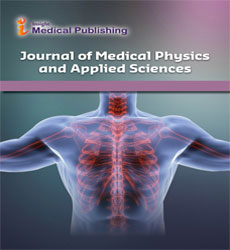The Science of Spectral Photon-Counting Computed Tomography
Casper Dueholm
Department of Oncology, Aarhus University, Aarhus, Denmark
DOI10.36648/2574-285X.9.4.86
Ganghua Tang*
1Department of Medical Physics, University of Freiburg, Freiburg, Germany
- *Corresponding Author:
- Ganghua Tang,
Department of Medical Physics, University of Freiburg, Freiburg, Germany
E-mail: tang@gmail.com
Received date: November 22, 2024, Manuscript No. IPIMP-24-20080; Editor assigned date: November 25, 2024, PreQC No. IPIMP-24-20080 (PQ); Reviewed date: December 09, 2024, QC No. IPIMP-24-20080; Revised date: December 16, 2024, Manuscript No. IPIMP-24-20080 (R); Published date: December 23, 2024, DOI: 10.36648/2574-285X.9.4.85
Citation: Tang G (2024) Advancements in Computational Phantoms for Radiation Dosimetry and Applications. J Med Phys Appl Sci Vol.9.No.4: 85.
Description
Computational phantom models have become integral tools in the field of radiation dosimetry, providing a virtual representation of human anatomy for accurate dose calculations in various medical applications, such as radiotherapy, diagnostic imaging and radiation protection. These models simulate the human body's complex geometry, tissue composition and various physiological processes, making them useful for assessing the impact of ionizing radiation on different organs and tissues. Computational phantoms, by eliminating the need for physical models or human testing, have revolutionized radiation research, enabling precise calculations of radiation dose distributions in individuals and populations. This has extreme implications for improving treatment planning, minimizing radiation exposure and advancing our understanding of radiation biology. The concept of computational phantoms dates back to the early 1960s, when researchers first recognized the limitations of using physical human phantoms in radiation dose assessments. These physical models, o ten made from materials such as plastic or tissue-equivalent substances, were cumbersome and lacked the anatomical accuracy needed for detailed calculations. With the advent of computer technology, scientists began developing computational models to better represent the human body. Early models were relatively simple and represented the body in a series of geometric shapes or segmented volumes. As computational power grew, more sophisticated models emerged, incorporating iner anatomical details and better approximations of human tissue composition. The development of voxel-based phantoms, which divide the human body into small cubes or voxels representing different tissue types, was a significant breakthrough. These models allowed for more accurate simulations of how radiation interacts with various tissues, accounting for the heterogeneous nature of the human body.
Types of computational phantom models
Computational phantoms can be broadly classified into several categories, including mathematical models, voxelbased phantoms and mesh-based phantoms, each offering unique advantages depending on the application.
Mathematical models: These are the earliest forms of computational phantoms, using a set of equations to describe the geometry of the human body and its organs. They are typically based on anthropometric data and are relatively simple to create and use. However, they lack the anatomical accuracy of more modern phantoms and are primarily used for estimating radiation exposure in population-based studies.
Voxel-based phantoms: Voxel-based models represent the human body as a grid of small three-dimensional units, or voxels, each assigned a speci ic tissue type. These phantoms are typically generated from high-resolution medical imaging data, such as CT or MRI scans and are highly detailed, allowing for realistic simulations of radiation dose distribution. Voxel-based phantoms are often used in personalized medicine and radiotherapy planning, as they provide an accurate representation of an individual's anatomy.
Mesh-based phantoms: Mesh-based phantoms are a more recent development and use triangular or quadrilateral meshes to represent the surface of the body and its organs. These phantoms offer a compromise between the simplicity of mathematical models and the complexity of voxel-based models. They are particularly useful in applications requiring fast calculations, such as Monte Carlo simulations for radiation transport modeling.
Applications of computational phantoms
Computational phantom models are widely used in various ields where accurate radiation dose estimation is critical. Some of the key applications include:
Radiotherapy treatment planning: One of the most significant uses of computational phantoms is in the ield of radiotherapy. Phantoms are employed to simulate the delivery of ionizing radiation to tumors while minimizing exposure to surrounding healthy tissues. By accurately modeling the patient’s anatomy, phantoms help optimize the radiation dose distribution, ensuring that the tumor receives the maximum possible dose while minimizing damage to healthy organs. Personalized treatment plans based on patient-specific phantoms can improve treatment efficacy and reduce side effects.
Diagnostic imaging: In diagnostic imaging, particularly in computational phantoms play a vital role in dosimetry. These imaging modalities rely on ionizing radiation and accurate dosimetry is useful to prevent unnecessary exposure to patients. Phantoms help calculate the dose to different tissues during imaging procedures, ensuring that the radiation dose is kept within safe limits while maintaining high image quality for diagnosis.
Radiation protection: Computational phantoms are vital in radiation protection research, where understanding the potential impact of radiation on human health is useful. By simulating exposure scenarios, such as those in occupational radiation settings or environmental radiation, phantoms provide insights into the risks of radiation exposure to workers, astronauts, or the general population. These models are used to assess potential health outcomes and to develop safety standards and regulations for radiation exposure limits.
Open Access Journals
- Aquaculture & Veterinary Science
- Chemistry & Chemical Sciences
- Clinical Sciences
- Engineering
- General Science
- Genetics & Molecular Biology
- Health Care & Nursing
- Immunology & Microbiology
- Materials Science
- Mathematics & Physics
- Medical Sciences
- Neurology & Psychiatry
- Oncology & Cancer Science
- Pharmaceutical Sciences
